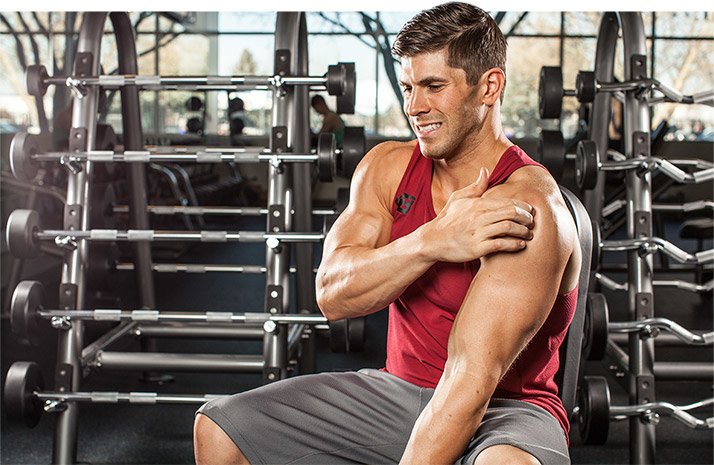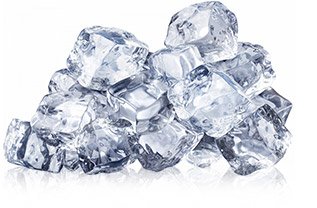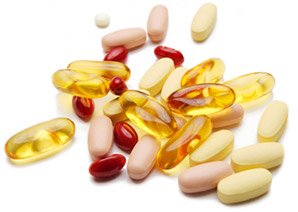
How Bodybuilders Can Avoid Tendon Trouble
Repetitive motions like lifting weights can set you up for overuse injuries, the most common of which is tendinopathy. Here's how to avoid it, and what to do if it strikes.
Weight training is an activity that requires repetitive movements on a consistent basis in order to maximize results. In addition to performing repetitive movements consistently, weightlifters must often perform these movements with relatively heavy loads to reach failure or near failure on various exercises. Because of the repetitive nature, overuse injuries are common. One such injury is tendinopathy, which is a condition that affects a tendon, possibly causing chronic pain or even a ruptured tendon.1
While the term tendinitis is more recognized, tendinopathy is a more general term that can refer to either tendinitis, tendinosis, or a tendon tear. Although tendinitis and tendinosis are similar in that they both affect the tendon, there are several differences. Tendinitis results from micro-tears that happen when the musculotendinous unit is overloaded with a tensile force that's too heavy and/or too sudden and causes inflammation of the tendon.
On the other hand, tendinosis results from continued overuse of the tendon without giving it time to heal. Chronic overuse results in degeneration of the tendon's collagen.
Because the term tendinopathy doesn't take into account the underlying pathology of the injury, medical professionals have given preference to this term for these tendon conditions over the past several years.
Tendon Trouble Where And Why?
Tendinopathy is extremely common among longtime lifters, and many of you will encounter it at some point. It can occur from a combination of both intrinsic and extrinsic factors. Examples of extrinsic factors, which are those factors found outside of the body, mainly include the following: exercise selection, load used for the exercise, diet, and speed of the movement.
Examples of intrinsic factors, which are those found within the body, mainly include poor biomechanics such as muscular imbalances, lack of flexibility/mobility, and limb malalignments. Since several variables can contribute to tendinopathy, it's essential to be aware of the potential causes.

The most common sites for tendinopathy are the supraspinatus of the rotator cuff, the origin of the long head of the biceps in the shoulder, the origin of the wrist extensors and flexors (on the lateral and medial aspect of the elbow, respectively), the patellar tendon, the Achilles tendon, and the posterior tibialis tendon.1 Among weightlifters, the insertion of the triceps tendon on the posterior aspect of the elbow is another common problem area.
It's not uncommon for many weightlifters to ignore the pain associated with tendinopathy and implement the no-pain, no-gain mentality. That's usually not very smart. For example, painful tendons have been shown to have changes in cellularity (both increased and decreased), cell rounding, decreased matrix organization, and an increased infiltration of blood vessels, among many other changes at the molecular level.1
Collectively, these structural changes to the tissue make the tendon more susceptible to more severe injuries such as a complete tendon rupture.
9 STEPS TO PREVENT TENDINOPATHY

-
Precede every workout with a brief general cardiovascular warm-up of 5-10 minutes, to increase your body temperature.
-
Then perform a dynamic warm-up of 3-5 minutes for the muscles that will be used for the upcoming workout. This part of the warm-up should include dynamic flexibility work.
-
Perform 1-2 submaximal sets of the first exercise in your workout prior to performing your working sets.
-
Perform static stretches for the muscles utilized during your workout after completing your training session.
-
Ensure your training program is balanced between agonists and antagonists. It's not ideal, for example, to perform 20 sets for chest and only 10 for back on a regular basis unless there's an imbalance that needs to be corrected. Strength imbalances may lead to injuries.
-
Keep an eye on technique. Regularly performing sloppy sets with jerky motions may lead to injury.
-
Don't train to failure on every set of every exercise of every workout.
-
Provide adequate rest between workouts (48-72 hours) for muscles that have been worked.
-
Don't ignore sharp pain in the tendon during the workout or after the workout, as it's an indication that a tendinopathy may be present. The earlier it is addressed, the faster the recovery.

Once a tendinopathy appears, it tends to stick around. According to research published in "Physician and Sports Medicine," patients afflicted with short-duration tendon symptoms generally return to full sporting activity in 2-3 months, and patients with chronic symptoms may require 4-6 months.2
While it's not often necessary to stop training altogether when dealing with a tendinopathy, it's important to avoid exercises that aggrevate pain in the tendon.
Here are a number of strategies that can be used to treat tendinopathy:
ONCE TENDINOPATHY STRIKES
-
Active rest: Rest the tendon by avoiding exercises or activities that cause pain. This doesn't mean you have to stop training, but it means focusing on other body parts, modifying exercises so they're pain-free, or working on other muscle groups.
-
Adjusted biomechanics: Mechanical overload is typically the culprit of tendinopathy. Poor form and overloading a tendon from muscular imbalances, lack of tissue mobility, or malalignments can all contribute to this mechanical overload. Addressing these problems can help fix the problem.

-
Ice: The vasoconstrictive property of ice is extremely helpful for combatting the abnormal neovascularization that occurs with tendinopathy, and is recommended to treat this condition.2
-
Electrotherapy: The use of a laser and/or high-voltage galvanic stimulation have shown to stimulate collagen synthesis in the laboratory setting.2 These modalities are typically found in athletic-training rooms or physical therapy clinics.
-
Low-energy shockwave therapy: A shock wave is defined as an acoustic wave, at the front of which pressure rises from the ambient value to its maximum within a few nanoseconds. The rationale for its clinical use is stimulation of soft tissue healing and inhibition of pain receptors. Conclusive evidence on the effectiveness of this modality is still lacking, but some studies have shown some potential for its benefits.3
-
Load-decreasing devices: Certain braces or supports can help to decrease the load on a tendon. Braces for the elbow and knee to decrease the load on the wrist extensors or patellar tendon (respectively) have gained clinical support. Heel lifts and foot orthoses have also been shown to help decrease the load along the Achilles tendon.2
-
Appropriate strengthening: Eccentric-strengthening (negatives) programs have proven to be very effective in treating tendinopathy.2
-
Massage: Applying deep-friction to the tendon for at least 10 minutes after the numbing effect has been achieved results in reduced pain and increased strength and mobility.4

-
Nutrition: Vitamin C, manganese, zinc, vitamin B6, and vitamin E have been linked to tendon health.
-
Surgery: Surgery is considered the last resort for treating tendinopathies. Surgery can be used to remove the damaged tissue, but hasn't been shown to improve protein synthesis or maturation.2 Other conservative treatments should be utilized before undergoing surgery.
The use of nonsteroidal anti-inflammatory drugs (NSAIDs) and corticosteroid injections to treat tendinopathy is controversial. Although the use of these drugs was previously a preferred method, little evidence exists to support this treatment option. While these drugs may provide short-term relief, some literature suggests that these drugs may inhibit tendon repair.2
Bottom line: Preventing tendinopathy is much easier than trying to treat it, as this condition may develop into something worse. Use the above suggestions to protect your body and lift weights safely.
References
- Riley, G. (2008). Tendinopathy—from basic science to treatment. Nature Clinical Practice Rheumatology, 4(2), 82-89.
- Khan, K., Cook, J., Taunton, J., & Bonar, F. (2000). Overuse tendinosis, not tendinitis part 1: A new paradigm for a difficult clinical problem. Physician and Sportsmedicine, 28(5).
- Maffulli, N., & Longo, U. (2008). Conservative management for tendinopathy: Is there enough scientific evidence? Rheumatology, 47(4), 390-391.
- Stasinopoulos, D. (2004). Cyriax Physiotherapy For Tennis Elbow/lateral Epicondylitis. British Journal of Sports Medicine, 38(6), 675-677.
